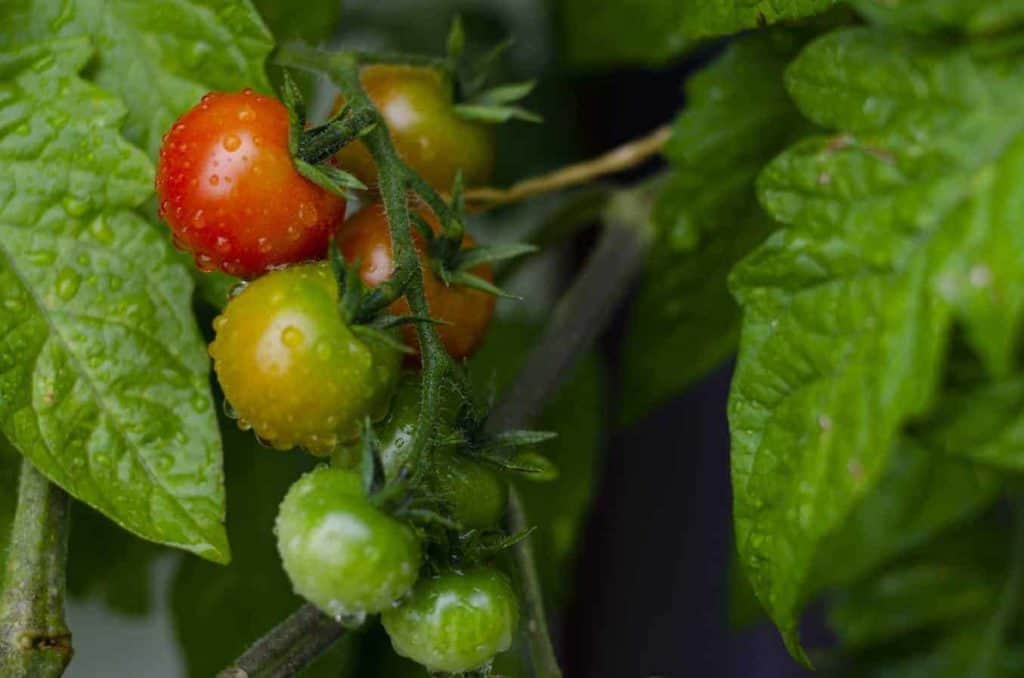If you’re here, you’ve probably seen or heard about people growing tomatoes upside down. Does it even work? Is it worth it? The short answer is yes and depends. But it may come as a surprise to you that growing tomatoes upside down actually takes advantage of the natural growth habit of tomatoes to give good yields with less work.
Tomatoes are actually a naturally vining plant, but they don’t climb like beans and cucumbers. A tomato plant growing naturally in the wild will fall over at some point and start sprawling on the ground, making roots along the stem. The reason we tie tomatoes to a stake or trellis is because we want to make sure the tomatoes are eaten by us and not bugs on the ground, and also because it helps protect tomato plants from soil-borne diseases.
Hanging tomato plants upside down allows a tomato to just keep growing like a natural vine, meaning there is no need to tie or trellis your tomato. Hanging upside down, tomatoes will also avoid the soil-borne diseases like tomato blight which can spell the death of plants grown vertically in the ground. There are also few to no weeds to worry about and upside down tomatoes require overall less work to maintain. You also get the benefits of container gardening, such as being able to move your tomatoes around.
On this page:
Two Ways of Hanging Tomato Plants Upside Down
Using a Regular Hanging Planter
There are two ways of hanging tomato plants upside down. One way is to just grow it in a regular hanging basket and let the tomato flop over and grow downward. The other is to use an actual upside down planter where the tomato plant grows out of the bottom of the plant. Both have advantages.
Regular hanging planters are generally easier to find. It’s also easier to water a regular hanging planter. The main issue you will run into is waiting for the tomato to grow tall enough before it naturally flops over the side and starts growing downward.

Using Upside Down Hanging Planter
Upside down planters offer the benefit of having the tomato start growing upside down from the beginning. Because it’s literally hanging upside down, you have no weeds to worry about, even if you grow it outside, since most weeds will not grow upside down (although I’ve seen some clover try). The one issue is if you overwater and the water begins dripping all over your plant. You generally want to avoid too much moisture on the stem and leaves of your tomato.
Benefits of Growing Tomatoes Upside Down
Upside down tomatoes grow more naturally, and require no staking, no trellis, and usually no pruning. Tomatoes naturally produce a lot of side shoots (called suckers) which can get out of control in a conventional garden, but hanging downward, you can let it vine out as much as you want and only prune dead or dying branches.
Both upside down planters and hanging baskets take advantage of vertical space so they take up less space overall. You can easily hang some on a balcony or on your patio or deck for a nearly unlimited supply of tomatoes all season.
Upside down planters can also be moved around just like regular containers, so you can tweak the amount of sun or bring the tomato plant inside for protection if you’re expecting extreme weather.
Growing tomatoes upside down means more air flow and therefore less chance of diseases like tomato blight.
Disadvantages of Growing Tomatoes Upside Down
You can grow any kind of tomato upside down, but this technique really works best with small tomatoes like cherry or grape tomatoes. Other varieties may not get as large yields, larger tomatoes are quite heavy, and the plants can grow even taller than the distance between your ceiling and floor. The tallest tomato on record was 65 feet tall, but most indeterminate tomato varieties can easily reach 4-8 feet in a normal growing season.
Upside down containers require a little more watering than hanging baskets, unless you get one that has the soil covered on top. The surface soil of upside down containers dries out more quickly. You also have to be mindful of the excess water dripping out the bottom if you use an upside down container.
 Best Tomato Varieties to Grow Upside Down
Best Tomato Varieties to Grow Upside Down
The best varieties to grow upside down are cherry and grape tomatoes, since they are prolific, grow and ripen quickly compared to large tomatoes, and won’t weigh down your upside down planter or hanging planter with a full fruit set. Two varieties that are ideal are Cherry Falls and Cascade cherry tomatoes, which produce clusters upon clusters of tomatoes that naturally hang down. But this can work with pretty much any other cherry/grape tomato varieties such as Sungold cherry, Sweet Million, Red Robin, Tumbler, Pink Bumblebee, or whatever you can find at your nursery. If you just want a small tomato plant, you can try one of the super dwarf varieties like Minibel and Orange Hat.
If you do decide to try growing a larger tomato upside down, choose a determinate/bush variety to avoid having a 15-foot vine sprawling along the floor (unless you want that).
